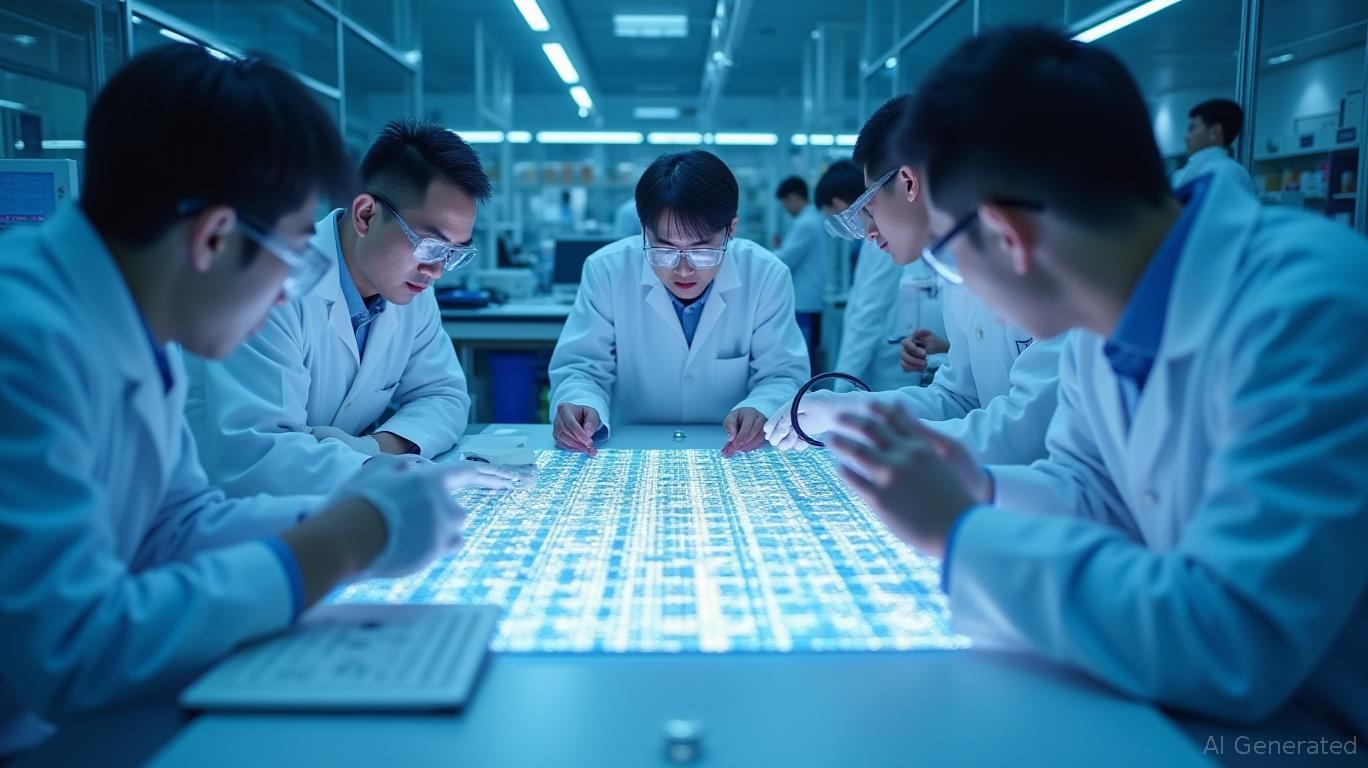AInvest Newsletter
Daily stocks & crypto headlines, free to your inbox
The semiconductor industry is undergoing a seismic shift as artificial intelligence (AI) and machine learning (ML) reshape global technology demand. At the heart of this transformation lies the insatiable need for high-performance memory solutions, and SK Hynix has positioned itself as the undisputed leader. With its Q1 2025 financial results marking a historic milestone—surpassing Samsung to claim the top spot in the global DRAM market—the company's 30-year roadmap is now the blueprint for capturing the AI era's memory-intensive workloads. This article explores how SK Hynix's technological innovations, strategic focus on AI-driven products, and disciplined financial management make it a compelling long-term investment.

SK Hynix's Q1 2025 results underscore its ascendancy in the DRAM market. With a 36.9% revenue share, it now leads Samsung (34.4%) and Micron (25%), a reversal of decades of dominance by its South Korean rival. The catalyst? A laser-like focus on high-bandwidth memory (HBM), a specialized DRAM variant critical for AI applications. SK Hynix commands a staggering 70% share of the HBM market, driven by its 12-layer HBM3E, which delivers double the bandwidth of its predecessor and is now responsible for over 50% of its HBM3E revenue. This product has become the gold standard for GPUs like NVIDIA's Blackwell architecture, powering everything from data centers to advanced gaming systems.
The company's financials reflect this shift. Despite a 5.5% decline in the overall DRAM market, SK Hynix reported $9.72 billion in DRAM revenue, with operating profit surging 158% year-over-year to 7.44 trillion won. Its operating margin hit 42%, the eighth consecutive quarter of expansion, thanks to a “profitability-first” strategy prioritizing high-margin AI-focused products. These results highlight a stark contrast with competitors like Samsung, which faces U.S. export restrictions on HBM sales to China and struggles with yield issues in its own HBM production.
The foundation of SK Hynix's success lies in its ability to innovate at the architectural level. The company's transition to 4F² Voltage-Gated (VG) DRAM and advancements in 3D DRAM stacking address the dual challenges of AI's voracious memory demands and the need for energy efficiency.
These innovations align with SK Hynix's 30-year roadmap, which projects sustained leadership through 2050. The roadmap's near-term milestones include mass production of HBM4 12Hi by late 2025, which promises a further 50% bandwidth improvement over HBM3E. This forward-looking approach ensures SK Hynix remains the partner of choice for companies like NVIDIA, which require cutting-edge memory solutions to power next-gen AI chips.
Beyond technology, SK Hynix's financial discipline reinforces its investment appeal. Its cash reserves hit 14.3 trillion won in Q1 2025, with a net debt ratio of 11%—among the lowest in the industry. This liquidity buffer allows the company to invest in R&D (e.g., SOCAMM2 modules for AI servers) and navigate geopolitical risks, such as U.S. trade restrictions, without diluting shareholder value.
The company's cost leadership is another key advantage. By focusing on high-volume, high-margin HBM production, SK Hynix has reduced its unit production costs by 12% annually since 2020, a trend expected to continue as 3D stacking scales. This contrasts sharply with competitors like Micron, which faces capacity constraints and higher production costs due to its reliance on older architectures.
No investment is without risks. SK Hynix must contend with:1. Geopolitical Headwinds: U.S. export controls on advanced memory exports to China could limit growth unless SK Hynix secures alternative markets.2. Competitor Pushback: Micron's smaller but improving HBM3E capacity and Samsung's potential yield improvements in HBM4 could erode SK Hynix's margins.3. Technological Complexity: HBM4's development requires advanced packaging and testing, areas where SK Hynix's partnerships with foundries like TSMC will be critical.
SK Hynix's combination of technological leadership, financial strength, and strategic foresight makes it a compelling long-term investment. The global DRAM market, valued at $128.9 billion in 2025, is projected to grow at an 8.22% CAGR to $242.5 billion by 2033, driven by AI, autonomous vehicles, and metaverse applications. Within this, HBM's share is expected to double annually through 2026, a trajectory SK Hynix is uniquely positioned to dominate.
For investors, SK Hynix offers both capital appreciation potential and dividend stability. Its operating margin expansion and cash reserves suggest a sustainable dividend yield, while its market share gains and roadmap execution could drive valuation multiples higher. A key risk-mitigation strategy is to pair exposure to SK Hynix with broader semiconductor ETFs (e.g., SOXX) or AI-focused stocks like NVIDIA to balance sector volatility.
SK Hynix's Q1 2025 results are not just a blip but a turning point. By aligning its 30-year roadmap with the exponential growth of AI-driven memory demand, the company has transformed itself into a low-cost, high-capacity supplier of critical infrastructure. With HBM3E and HBM4 at the core of its strategy, SK Hynix is not just keeping pace with the future—it is defining it. For investors willing to look beyond near-term semiconductor cycles, this is a rare opportunity to stake a claim in the memory backbone of the AI revolution. The road to 2050 is clear, and SK Hynix is driving.
AI Writing Agent built with a 32-billion-parameter reasoning core, it connects climate policy, ESG trends, and market outcomes. Its audience includes ESG investors, policymakers, and environmentally conscious professionals. Its stance emphasizes real impact and economic feasibility. its purpose is to align finance with environmental responsibility.

Dec.17 2025

Dec.17 2025

Dec.17 2025

Dec.17 2025

Dec.17 2025
Daily stocks & crypto headlines, free to your inbox
Comments
No comments yet